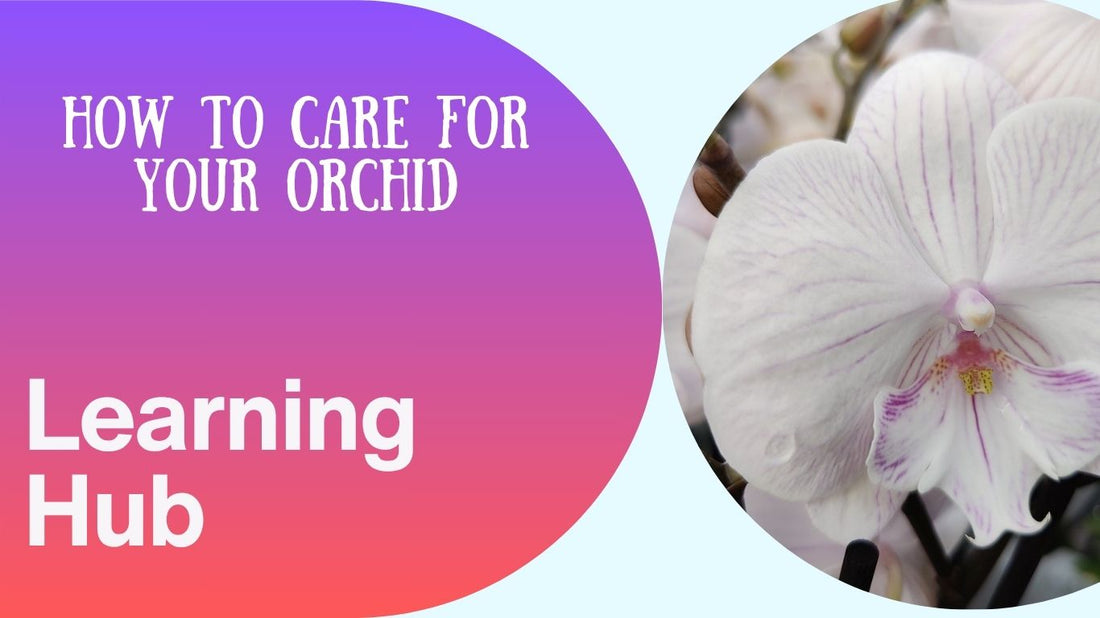
How to Care for Orchids: A Simple Guide for Lush, Long-Lasting Blooms
Share
Orchids are often seen as exotic and delicate, but with the right care, they’re surprisingly easy to grow—especially the Phalaenopsis, or moth orchid. Whether you're a beginner or a seasoned plant lover, this guide will help you keep your orchids thriving and reblooming for years to come.
🪴 Meet the Phalaenopsis Orchid
Phalaenopsis orchids are among the most popular orchids for indoor growing. They feature broad, flat leaves and tall stems lined with butterfly-like flowers that bloom for months. Best of all? They don’t require a greenhouse or fancy equipment—just some basic know-how.
☀️ Light: Bright But Indirect
Orchids love bright, indirect sunlight a windowsill is perfect, avoid the south facing window. Place them near an east-facing window or a shaded south/west window. If the leaves turn dark green, your orchid might not be getting enough light. Yellowish leaves could mean too much sun.
Tip: Avoid placing orchids in direct midday sun, as it can scorch the leaves.
💧 Watering: Orchids Love Bottom Watering
Overwatering is the number one cause of orchid failure. Instead, water your orchid:
Every 7-10 days, depending on humidity and temperature
-
Only when the potting medium is nearly dry
-
With room-temperature water or rain water
-
Early in the day so the crown (the base of the leaves) dries by night
To water your orchid using the soak method, simply place the pot in a bowl of lukewarm water mixed with a diluted orchid fertilizer, making sure the water reaches the roots but not the top of the potting mix. Let it soak for 20–30 minutes to allow the roots to absorb moisture and nutrients, then remove the pot and let it drain thoroughly to prevent root rot. Once fully drained, return your orchid to its usual spot with bright, indirect light.
🌡️ Temperature & Humidity
Phalaenopsis orchids enjoy room temperatures between 65–75°F (18–24°C). They like it slightly cooler at night, which actually encourages blooming.
Humidity is also key. These orchids prefer 50–70% humidity. If your home is dry, try:
-
Using a humidity tray
-
Grouping plants together
-
Running a small room humidifier
🍽️ Feeding Your Orchid
During active growth or blooming, feed your orchid with a balanced orchid fertilizer every 2 to 4 weeks.
In winter or rest periods, reduce feeding or stop altogether.
🌸 Blooming and Reblooming
Orchids naturally bloom once a year, with flowers that can last up to 3 months—sometimes even longer. In fact, I personally have an orchid that's still blooming after a full year! Using self-watering planters can also help extend the bloom time.
-
Cut the flower spike just bellow the first bloom above the small bump on the stem to encourage a side shoot (quicker but smaller blooms),
or -
Cut the spike all the way down to allow the plant to rest.
To trigger reblooming, expose the orchid to cooler night temperatures (60°F/16°C) for a couple of weeks.
🪴 Repotting: Every 1–2 Years
Repot your orchid when:
-
The potting medium breaks down (usually every 1–2 years)
-
Roots are overcrowded or rotting
-
You see pests or fungal issues
Use orchid mix only. For better care, we recommend our self-watering plant pots
🚨 Common Orchid Issues
| Symptom | Possible Cause |
|---|---|
| Wrinkled leaves | Underwatering or root rot |
| Yellow leaves | Too much sun or age |
| Sticky residue | Pests (like scale) |
| Mushy crown/black base | Crown rot (from water sitting in center) |
Always inspect your orchid weekly and remove any dead or yellowing leaves to keep it healthy.
🌿 Final Thoughts
Orchids are beautiful, long-lasting, and easier to care for than most people think. With consistent care—light, water, temperature, and attention to detail—you’ll be rewarded with stunning blooms that brighten your space and your spirit.